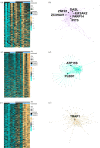Light pollution increases West Nile virus competence of a ubiquitous passerine reservoir species
- PMID: 31337318
- PMCID: PMC6661335
- DOI: 10.1098/rspb.2019.1051
Light pollution increases West Nile virus competence of a ubiquitous passerine reservoir species
Abstract
Among the many anthropogenic changes that impact humans and wildlife, one of the most pervasive but least understood is light pollution. Although detrimental physiological and behavioural effects resulting from exposure to light at night are widely appreciated, the impacts of light pollution on infectious disease risk have not been studied. Here, we demonstrate that artificial light at night (ALAN) extends the infectious-to-vector period of the house sparrow (Passer domesticus), an urban-dwelling avian reservoir host of West Nile virus (WNV). Sparrows exposed to ALAN maintained transmissible viral titres for 2 days longer than controls but did not experience greater WNV-induced mortality during this window. Transcriptionally, ALAN altered the expression of gene regulatory networks including key hubs (OASL, PLBD1 and TRAP1) and effector genes known to affect WNV dissemination (SOCS). Despite mounting anti-viral immune responses earlier, transcriptomic signatures indicated that ALAN-exposed individuals probably experienced pathogen-induced damage and immunopathology, potentially due to evasion of immune effectors. A simple mathematical modelling exercise indicated that ALAN-induced increases of host infectious-to-vector period could increase WNV outbreak potential by approximately 41%. ALAN probably affects other host and vector traits relevant to transmission, and additional research is needed to advise the management of zoonotic diseases in light-polluted areas.
Keywords: anthropogenic; ecoimmunology; host competence; light pollution; reservoir host.
Conflict of interest statement
We declare we have no competing interests.
Figures



References
-
- IDA. 2009. International Dark-Sky Association's practical guide 1: introduction to light pollution. Tucson, AZ: IDA.
Publication types
MeSH terms
Associated data
LinkOut - more resources
Full Text Sources
Medical
Miscellaneous

